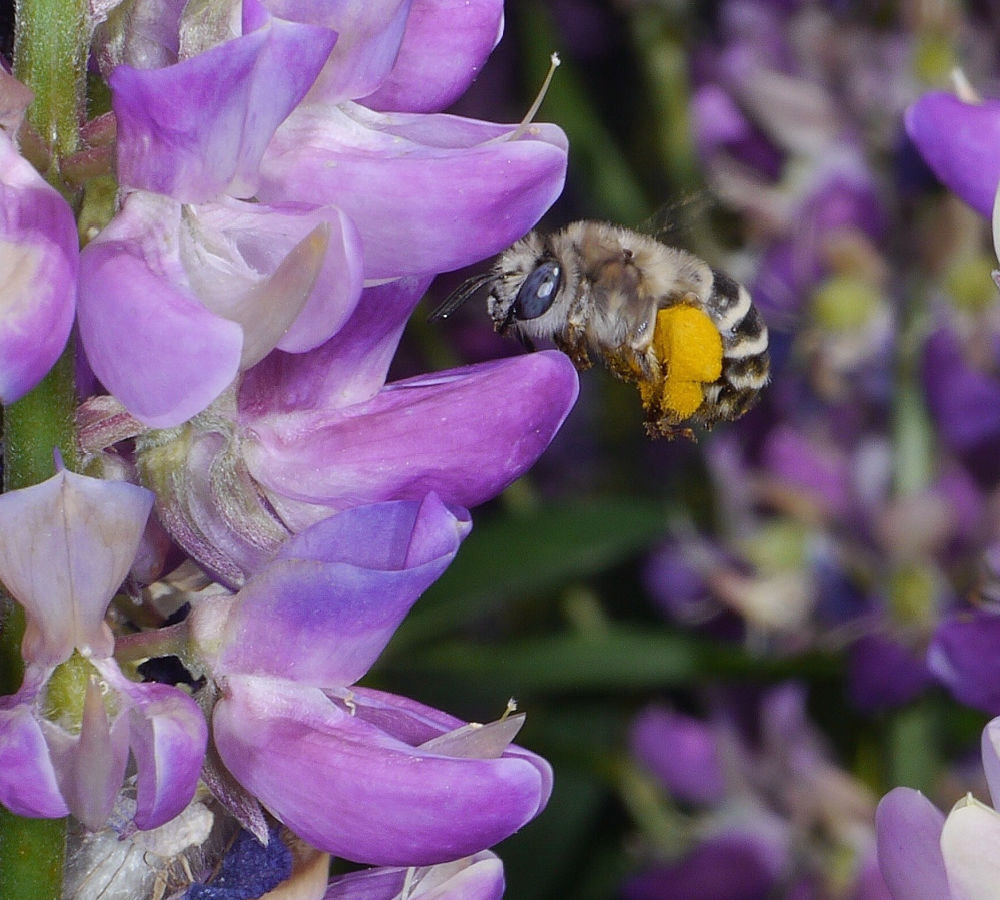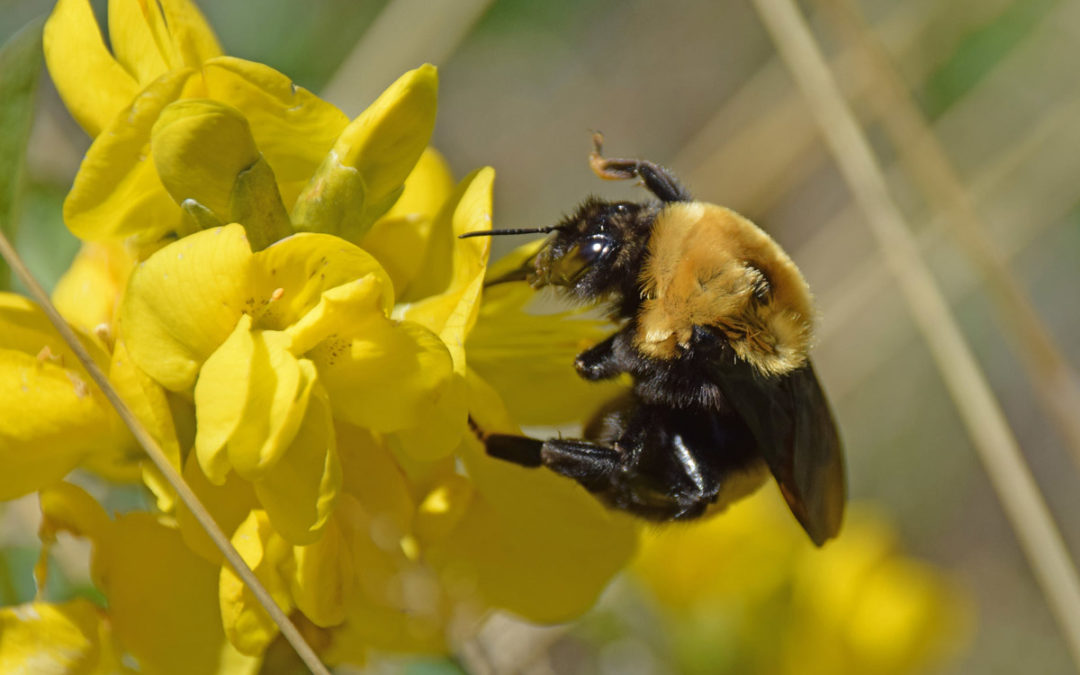A native bee heavy enough to lower the keel of a Golden banner flower, (Thermopsis divaricarpa)
and receive the pollen reward. ©Carol English

Long tongued moth diving into an Evening primrose (Oenothera caespitosa).©Carol English
Flowers in the mint family (Lamiaceae), position the stamens that contain the pollen to slap the insect on the upperside of the bee as it enters the flower (this is called nototribic). In the Pea family (Fabaceae), the stamens are positioned so the pollen slaps the underside or sternum of the bee (this is called sternotribic). You can watch native bees as they enter either pea or mint flowers and observe where the pollen is landing on the pollinator. It is fun, I recommend it.

Penstemon barbatus is essential for hummingbirds! ©Dave Elin
Evening primrose flowers offer nectar deep inside the style, which is sometimes as long as 4-5 cm long. This requires moths with very long tongues to access the nectar, and the pollen inadvertently drops onto the body of the moth in the perfect place on the body so that when the moth enters the next flower the pollen will drop onto the stigma of that next flower.

Stamens of flowers in the pea family, (Fabaceae), are positioned to attach pollen to underside of bee. ©Carol English
Finally, adding red penstemon to your garden such as Penstemon barbatus is essential for hummingbirds! Penstemon barbatus has co-evolved with hummingbirds. The pollen is positioned in the red penstemon to slap the hummingbird on the top of the head, so when it enters the next flower on a different plant, the stigma in that flower gets a nice dose of pollen for effective pollination.
-
Provide a succession of native flowers throughout the season.
-
Provide a diverse selection of native flowers.
Thanks to CoNPS member Carol English for permission to reprint this important information.

